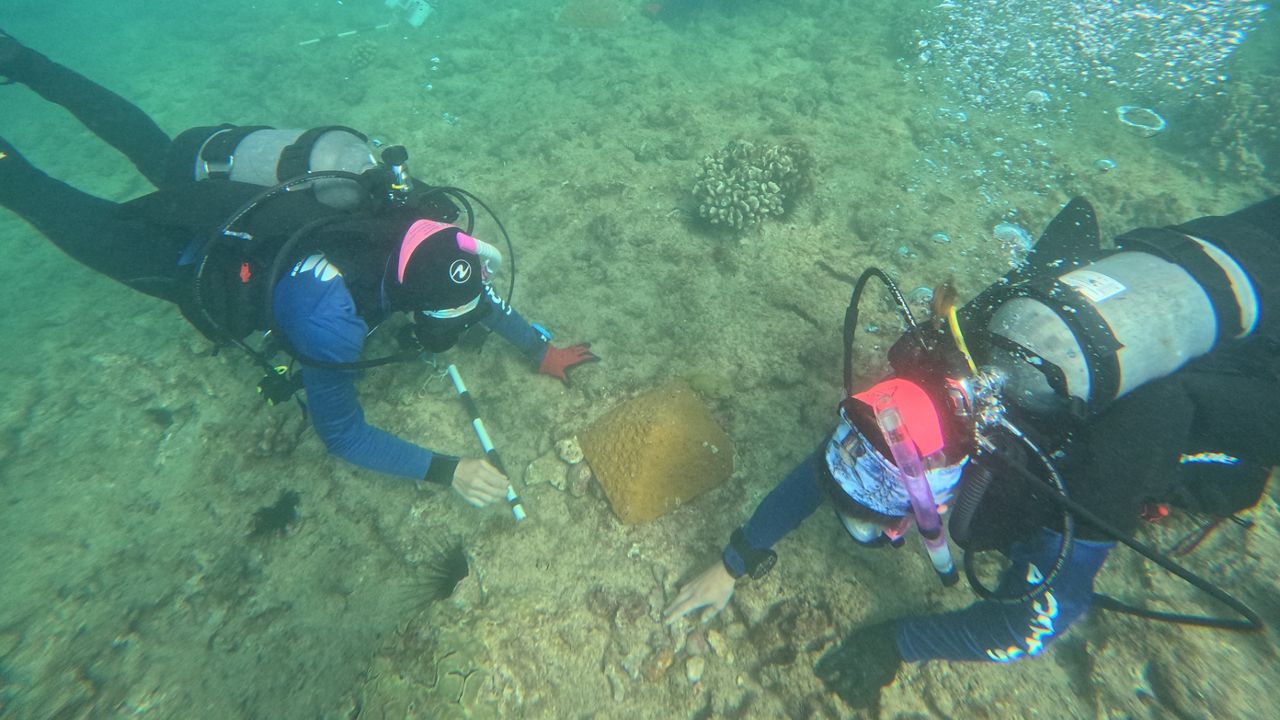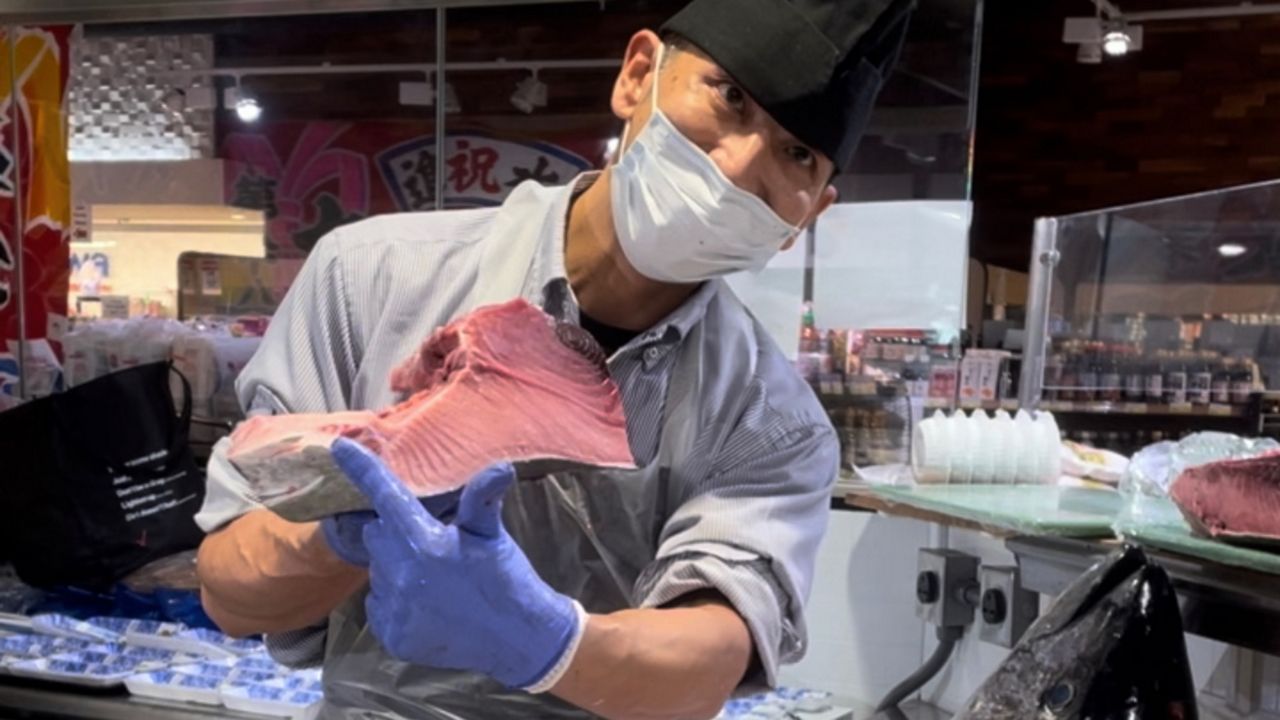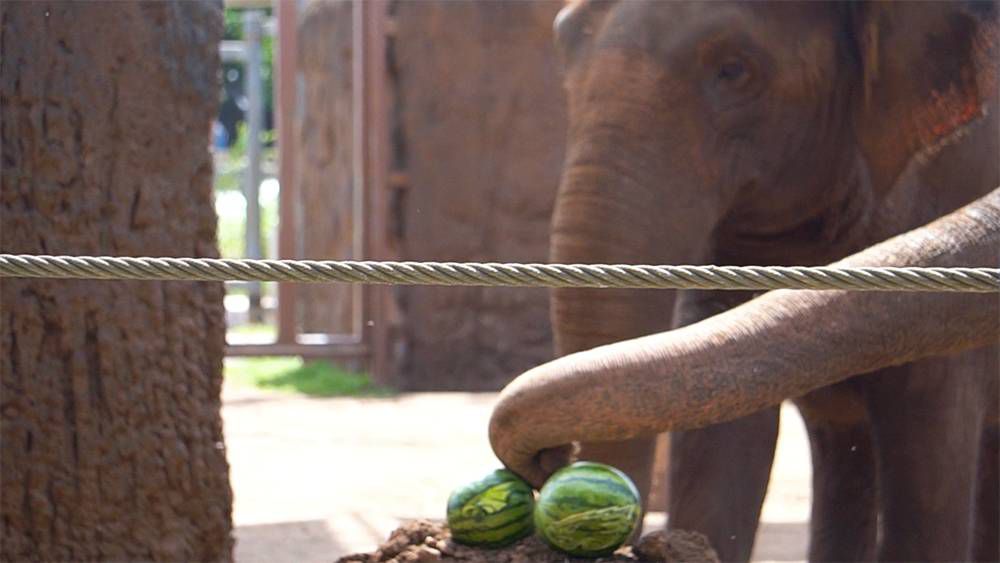Editor's note: This article is part of a series of end-of-year roundups that Spectrum News Hawaii will be publishing during the month of December. We hope you enjoy these reflections on local news in 2024.
Throughout the year, Spectrum News Hawaii has been covering reports of different invasive animals sneaking into Hawaii and later being captured or killed by authorities. From snakes to skunks, here is a look back at some of the animals that hitched rides to Hawaii and the tales of how they were discovered.
1. Police shoot snake found on Molokai
A non-venomous gopher snake arrived in Kaunakakai after traveling in a shipping container sent from California.
Employees at a hardware store in Kaunakakai found the snake while unloading the shipping container on Jan. 9, 2024, and called the local police, according to a news release from the Hawaii Department of Agriculture.
Police officers arrived at the scene with a pellet gun and shot the 20-inches long snake.
Gopher snakes are endemic to North America and can grow up to seven feet. The gopher snake eats small rodents, young rabbits, lizards, birds and their eggs. The snake kills its prey by construction and suffocation.
In Hawaii, snakes are illegal to possess and have no natural predators. There are no snakes in the state, except for the brahminy blind snake, a small non-venomous snake from Asia and Africa that resembles an earthworm.
2. Ball python snake found in dead man’s Waipahu home
Honolulu police officers found a ball python snake in a Waipahu home while doing a wellness check on April 13, 2024, for a man who turned out to be dead.
“We should all be very concerned that snakes are being transported and kept by residents which are a serious threat to Hawaii's unique environment,” said Sharon Hurd, chairperson of the Hawaii Board of Agriculture, in a news release.
The Honolulu Police Department contacted the Hawaii Department of Agriculture’s Plant Quarantine Branch. After inspectors arrived at the scene, they took custody of the non-venomous snake.
The snake measured about 3-and-a-half feet long.
Ball pythons are common in the pet trade, native to Western and West-Central Africa, and are constrictors that subdue their prey — small mammals and birds — by coiling around and suffocating them. They are called ball pythons because they curl into a ball when stressed or frightened.

3. Opossum captured in downtown Honolulu
On July 17, 2024, Honolulu police captured an opossum crawling around a downtown office building with a broomstick and plastic bin.
An office worker first spotted the opossum on a window ledge in the gated doorway outside the Austin Building (formerly the Hawaiian Electric Company building) at 223 S. King Street, according to a news release.
The office worker then alerted the Honolulu Police Department, who were able to climb over the locked gate to capture the animal.
Next, Plant Quarantine inspectors from the Hawaii Department of Agriculture were called and when they arrived, they took custody of the opossum.
The opossum is about 2-feet long from head to tail. The Hawaii Department of Agriculture said it is not known how the opossum arrived in Honolulu, but in the past they have come over in shipping containers.
Native to North American, opossums are omnivorous, eating insects, birds, eggs, rodents, fruits and vegetables. The opossum should not be confused with the possum, which lives in Australia.
Opossums occasionally carry rabies, other parasites and diseases. Because the origin of the opossum is unknown, the Hawaii Department of Agriculture tested it for rabies. It tested negative.
4. Skunk finally captured at Honolulu Harbor after evading inspectors for several days
Hawaii Department of Agriculture inspectors captured a skunk at Honolulu Harbor on Oct. 14, 2024, after tracking the animal for several days.
The skunk was first spotted on Oct. 10 by dock workers, who saw the mammal, which is known for its unpleasant scent, running around the parking lot at Pier 1 and reported the sighting to HODA's Plant Quarantine Branch around 3 a.m.
Inspectors set traps in the area, but did not capture the skunk.
At midnight on Oct. 11, security personnel from the U.S. Immigration Office at Pier 1 contacted HDOA and reported seeing the skunk on security footage entering and exiting the property through a fence.
Inspectors again responded and attempted to capture the skunk, but were unsuccessful.
On Oct. 14 at 8:30 p.m., USIO security reported seeing the skunk take shelter under a cargo container used for storage. Three inspectors responded and used a pole and wooden boards to coax the animal out of its hiding spot and capture it with a net, while braving the animal's odoriferous natural defense system.
HDOA is testing the skunk for rabies. The state agency said it’s not clear what ship the skunk hitchhiked to Oahu on and how long it has been here.
The state of Hawaii prohibits skunks, which are only allowed with a permit for research and exhibition in a municipal zoo. Skunks live in the continental U.S., Canada, South America, Mexico and other parts of the world.

5. Opossum discovered in shipping container
Freight workers in Kalihi unloading construction material on Aug. 19. 2024, found an opossum hiding in a 40-foot shipping container, the second such animal discovered in Honolulu in as many months.
After spotting the animal, which they said looked like a “very large rat,” the workers closed the container and called the Plant Quarantine Branch of the Hawaii Department of Agriculture.
Responding agriculture inspectors found the opossum sitting on top of a pallet and quickly captured it. Two traps were set inside the container overnight, but no other animals were found.
The opossum measured about 1.5 to 2 feet from head to tail and appears to be a male adult or older juvenile. HDOA said the opossum likely entered the container when it was loaded in California. Because the origin of the animal is unknown, the opossum was tested for rabies as a precaution.
6. Snake found in a shipping container of Christmas trees
A snake was discovered Nov. 16, 2024, in a shipment of Christmas trees as it was being unloaded at a store in Hilo.
Store staff opened a container full of Christmas trees, unloaded about half of the trees, and then saw the small snake. After spotting the slithery creature, they shut the container and notified the Hawaii Department of Agriculture.
HDOA inspectors from the Plant Quarantine Branch captured the two-foot-long reptile, identifying it as a non-venomous gopher snake.
Inspectors checked every Christmas tree and the container, but no other snakes were found.
“Although Plant Quarantine inspectors open every container of Christmas trees and wreaths that arrive and conduct an inspection, we do not have the resources to inspect every item in each container,” said Sharon Hurd, chairperson of the Hawaii Department of Agriculture in a statement. “We appreciate the store staff’s quick containment of the snake and our Hilo staff’s quick response.”
HDOA will transport the snake from Hilo to Honolulu. "The snake may be used for educational purposes, transferred to a municipal zoo or relocated to an appropriate facility on the mainland," a HDOA spokesperson told Spectrum News Hawaii.

Michelle Broder Van Dyke covers the Hawaiian Islands for Spectrum News Hawaii. Email her at michelle.brodervandyke@charter.com.










